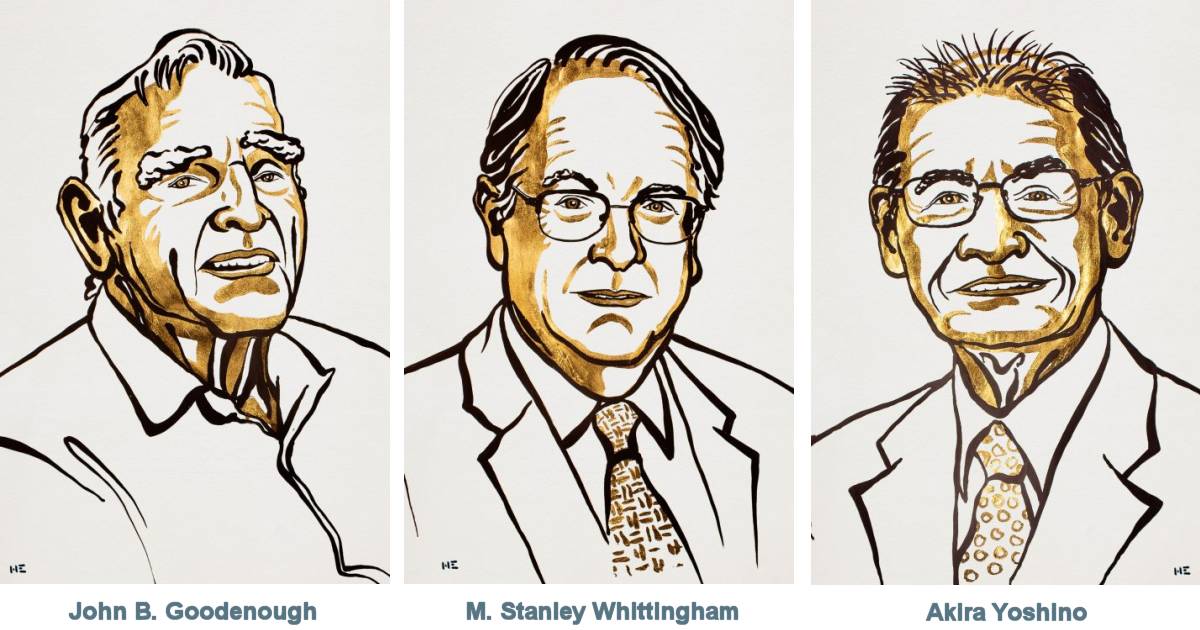
Images: Royal Swedish Academy of Sciences
Three scientists who played key roles in making lithium-ion based energy storage the ubiquitous technology it is today have been awarded the Nobel Prize in Chemistry 2019.
Lithium-ion batteries are used in a wide range of devices – from tiny sensors to mobile phones and notebook computers, through to solar batteries and electric vehicles.
One of the largest operating lithium-ion battery systems in the world is right here in Australia. The Hornsdale Power Reserve in South Australia, more commonly known as the Tesla Big Battery, provides up to 100 MW peak power and has a capacity of 129 MWh.
The Royal Swedish Academy of Sciences has awarded the Nobel Prize in Chemistry 2019 to M. Stanley Whittingham, John B. Goodenough and Akira Yoshino for their role in making all this happen.
In the 1970s M. Stanley Whittingham was researching the potential for superconductors when he created an innovative titanium disulphide cathode in a lithium battery that could house lithium ions. However, while the battery was capable of 2 volts, its anode was partially made from metallic lithium – which is rather unstable and explosive stuff.
In 1980, John Goodenough demonstrated that using cobalt oxide instead of titanium disulphide could produce as much as four volts.
Building on Goodenough’s cathode work, Akira Yoshino used a carbon material instead of reactive lithium in the anode, producing the first commercially viable lithium-ion battery in 1985. But it wouldn’t be until early in the next decade when lithium-ion batteries would hit prime time. The rest, as they say, is history.
“Lithium-ion batteries have revolutionised our lives since they first entered the market in 1991,” says the Academy. “They have laid the foundation of a wireless, fossil fuel-free society, and are of the greatest benefit to humankind.”
Goodenough, LiFePO4 And Glass Batteries
At 97, John Goodenough is the oldest person to be awarded a Nobel prize. Since his original work, he has continued in energy storage research – and right into his nineties.
Among his other contributions was to the development of lithium iron phosphate batteries (LiFePO4). LiFePO4 was first described in published literature by his research group at the University of Texas in 1996. LiFePO4 is currently the safest type of lithium-ion battery technology.
In more recent years he has been assisting in the development of a “glass battery“, a solid-state energy storage device using a glass electrolyte.
Goodenough and his team believe the technology will be safer, have a shorter charging time and achieve an energy density many times higher than current lithium-ion batteries; although the viability of the technology has been met with some skepticism.

 RSS - Posts
RSS - Posts



Speak Your Mind